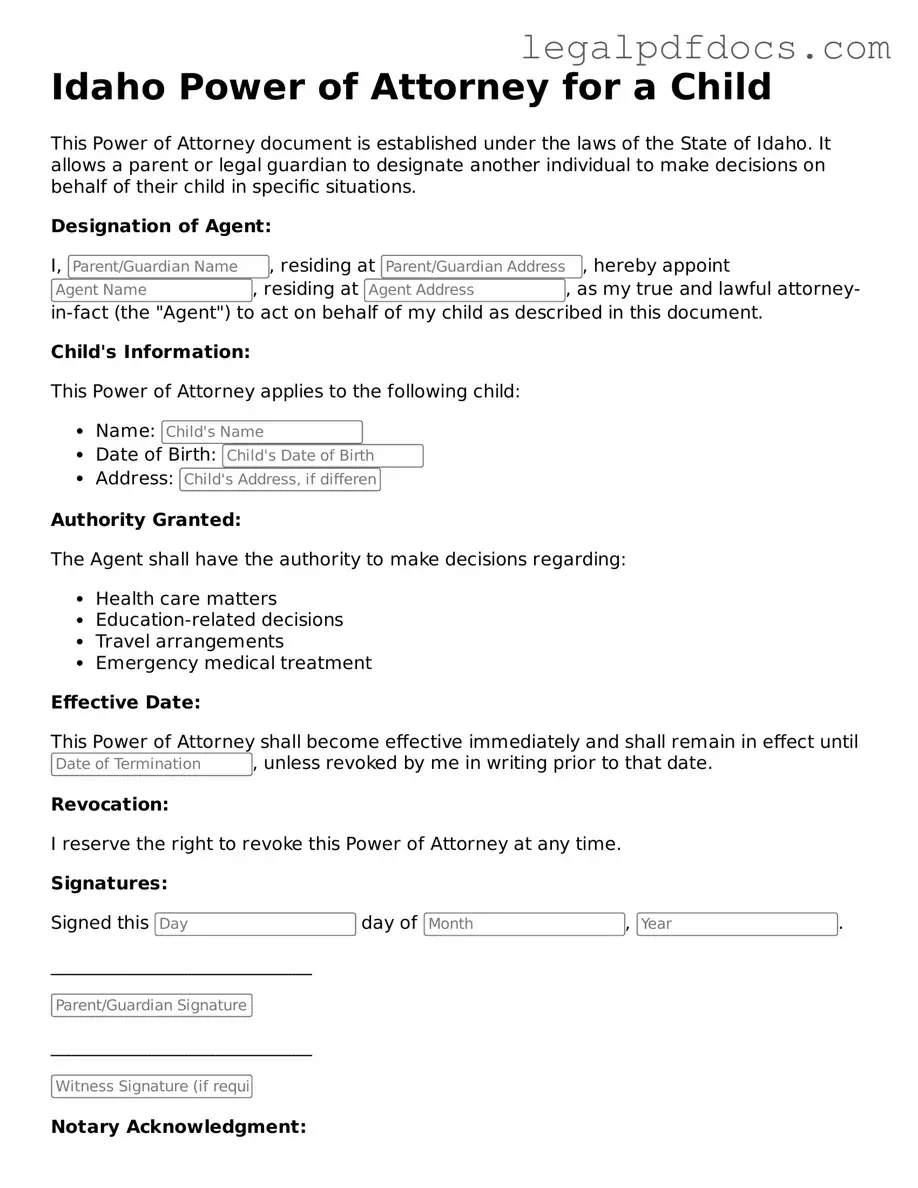Official Power of Attorney for a Child Form for Idaho
The Idaho Power of Attorney for a Child form is a legal document that allows a parent or guardian to grant another individual the authority to make decisions on behalf of their child. This form is particularly useful in situations where the parent may be unavailable, such as during travel or extended absences. Understanding how to properly complete and utilize this form can ensure that a child’s needs are met in the absence of their primary caregiver.
To begin the process, consider filling out the form by clicking the button below.
Open Power of Attorney for a Child Editor Here
